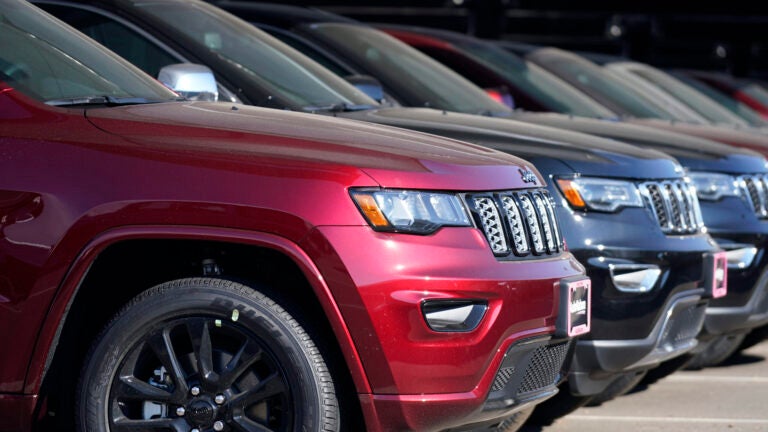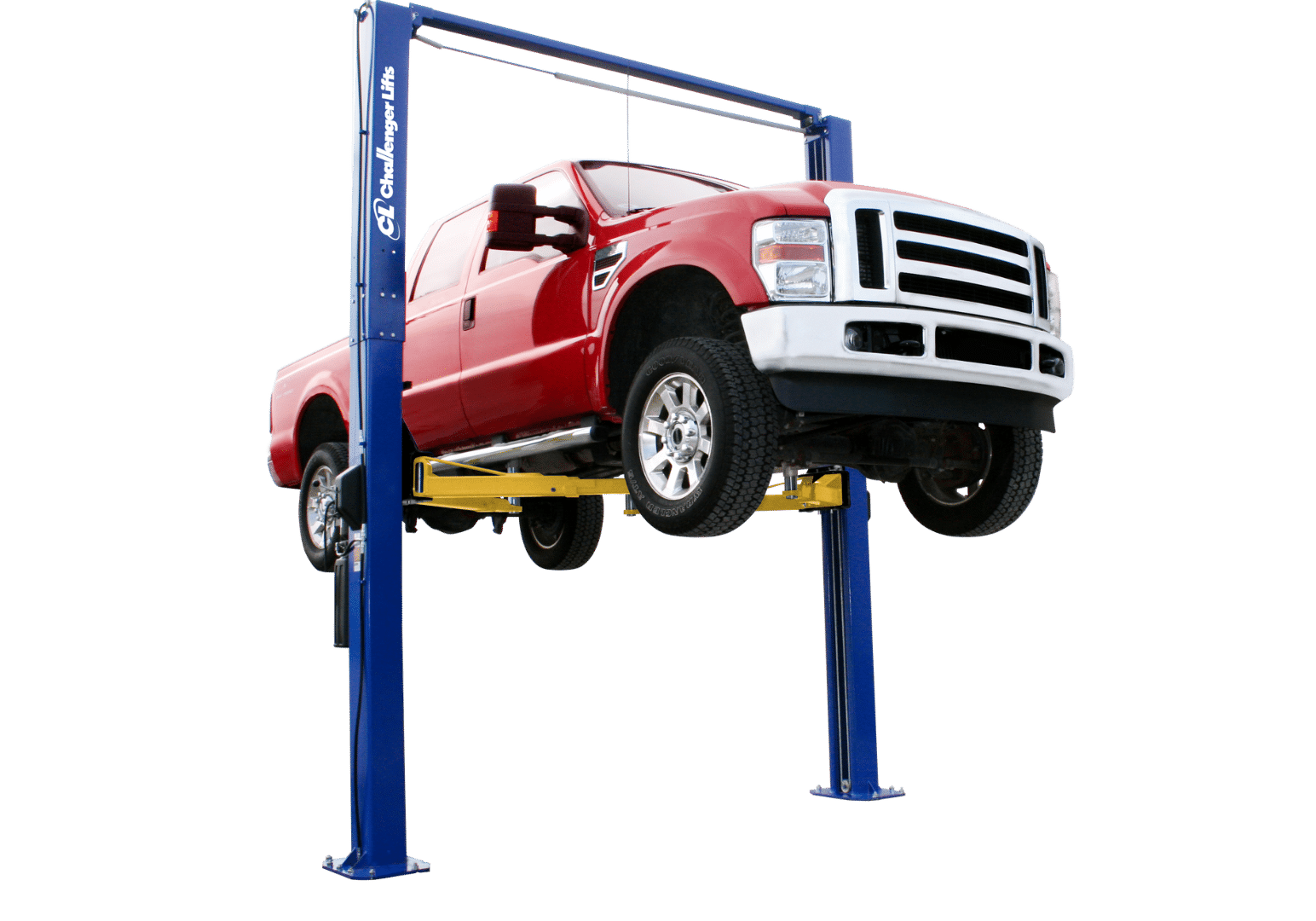Car dealers are raising prices. Automakers are pushing back. Consumers are stuck in between.

Business
Data shows such markups are pervasive across the industry: More than 80% of U.S. car buyers paid above MSRP in January, according to Edmunds.

Soaring car prices have set off a battle between automakers and independent dealers, with consumers routinely paying hundreds, often thousands, more than the listed price amid a protracted vehicle shortage.
Ford and General Motors recently upbraided dealers for ignoring the manufacturer’s suggested retail price, or MSRP, a practice that was practically unheard of a year ago and GM calls “unethical.” They’ve threatened to withhold deliveries of their most popular offerings, including Ford’s buzz-generating F-150 Lightning pickup, and other forthcoming EV models.
But data shows such markups are pervasive across the industry: More than 80% of U.S. car buyers paid above MSRP in January, according to auto market research firm Edmunds. That compares with 2.8% the same month a year ago and 0.3% in 2020.
The premium set consumers back $728, on average, though industry experts say four-figure markups are common on popular sedans and compacts, including Hyundai and Honda. Some car shoppers reported that the extra cost can run $10,000 or more for sought-after electric vehicles and hybrids.
Ford and GM’s warnings expose tense undercurrents between legacy carmakers and dealers, which have grown more fraught in recent years as upstart electric vehicle manufacturers like Tesla, Rivian, and Lucid sell directly to consumers. Legacy manufacturers, which often are required by state law to sell through dealerships, have conspicuously eyed direct-to-consumer sales strategies in recent years.
Analysts say higher prices at the dealership plus conflict over the future of sales could slow expansion in the nation’s still-nascent EV sector, which climate scientists say is crucial to tamping down carbon emissions from transportation. Sticker prices for hybrid and electric vehicles have fallen significantly over the past decade but remain out of reach for the typical car buyer.
Last summer, the Biden administration said it wanted half of all new cars to be battery-powered or plug-in hybrids by 2030. As of the second quarter of 2021, EVs accounted for about 3.6% of U.S. vehicle sales, according to a report from McKinsey & Co.
Tesla leads that market by a wide margin, though traditional automakers like Ford and GM are introducing new battery-powered vehicles of their own. Volvo, the Swedish carmaker founded in 1927, announced last March that it plans to be a fully electric car company by 2030 and sell online only.
Legacy automakers are banking on consumers to migrate to electric vehicles even as dealers worry they will follow the direct-sales path of EV start-ups, edging them out of a market that’s projected to balloon to nearly $1 trillion by 2030.
– – –
Sharon McNary, an amateur triathlete in Los Angeles, went looking for a hybrid Ford pickup in early January to better carry her bicycle to scenic locales outside across California. A Ford dealership in Orange County asked for $12,000 above the hybrid’s MSRP.
No deal, she said. “The car market is completely bonkers right now,” she told The Washington Post.
She turned to David Eagle, a Los Angeles-based auto broker, to help her scope out the market. His company, Current EV, helps shoppers navigate electric vehicle rebates and incentives, and negotiate prices with dealers.
But even Eagle couldn’t get the number McNary wanted. She is still driving her Honda hatchback.
Since the pandemic began, Eagle told The Post, the auto market has swung from one extreme to another. Carmakers cut production in 2020 during the initial waves of coronavirus infections. Prices fell, and perfectly good autos sat on dealer lots for months.
Then in 2021, buyers’ appetite roared back just as supply chain snags, especially in microchips, hampered manufacturers. Some 15 million vehicles were sold last year, up from 14.6 million in 2020, according to Cox Automotive. Labor shortages and soaring inflation also weighed on the industry’s output. And there was a trickle-down effect on the used car market, where prices climbed 40% in January compared with the same period last year, according to the Bureau of Labor Statistics.
Auto dealers across the price spectrum see new business imperatives to cope with the short supplies, Eagle said, and they have every right to set the price of cars they purchased wholesale.
Jeff Aiosa, who owns a Mercedes-Benz dealership in New London, Conn., said he normally has two to three months’ worth of vehicle inventory. But in the past several weeks it’s been closer to a 20-day supply. A growing number of cars are sold before they reach his lot, and there aren’t many others for a customer to claim. Fewer sales mean he has to mark up prices on what he does have.
“I think that a lot of the high line luxury buyers understand that, ‘Look, your volumes are down and you historically always discount,’ ” Aiosa said. ” ‘If we need now to pay a little bit of an upcharge for something that we want and need right now, we understand that that’s the environment that we’re in. And you have to stay in business, and we want you to stay in business because we don’t want to come back and see the lights off and not be able to service our car.’”
Rising dealer prices have swept across nearly all brands. GM’s luxury Cadillac line had an average $4,048 markup in January, according to Edmunds. Kia, Korean automaker Hyundai’s bargain brand, had a $2,289 markup.
GM did not respond to a request for comment. Hyundai in a statement said it “consistently reminds its dealers of the need for complete transparency” on pricing and “strongly reinforce[s]” that prices advertised online for vehicles should align with retail prices. “We strongly discourage our dealers from charging prices above MSRP,” the company said.
Ford, meanwhile, saw a $163 add-on to MSRP, on average, while GM’s Chevrolet and GMC brands sold $625 and $677 higher, respectively. Those numbers are still lower than the industry average, underscoring just how much of a threat Ford and GM find dealer markups to their newly launching models, said Jessica Caldwell, Edmunds’s executive director of insights.
That kind of price volatility — along with the industry’s pivot to more eco-friendly models — has manufacturers looking to reposition themselves in the market.
“With the industry changes to product itself,” Caldwell said, “you can’t just change that. You have to evaluate the way things are sold as well.”
– – –
Ford chief executive Jim Farley told investors this month that 10% of the company’s nearly 3,000 U.S. dealerships consistently priced vehicles above MSRP in 2021.
In response, spokesman Said Deep told The Post, Ford reserves the right to “redirect their allocation” of F-150 Lightning electric pickups for the 2022 model year.
F-150 Lightning customers have only recently been able to convert their reservations into firm orders, Deep said, and Ford was receiving complaints that certain dealerships were raising prices above MSRP that customers ordered under. Overpricing the vehicles could dent the reputation of the truck, Ford, and its new EV offerings, the company reasoned.
“The Lightning is a big deal for us,” Deep said. “It’s a leap ahead in innovation for any of our trucks. It plays such a critical role for our brand and all our dealerships.”
If dealers continue pricing above MSRP, he said, Ford may reallocate their assigned inventory for forthcoming electric releases, including the Bronco SUV and Maverick pickup.
To some dealers and auto industry experts, those moves portend a wholesale shift in how carmakers envision the future of sales.
Farley told investors that the profitability of Ford’s gas-powered models gave the company the resources not only to scale up EV manufacturing capabilities, but also to increase margins on EVs “through things like vertical integration and new customer experiences, accelerating our physical experiences to the dealers on both businesses.”
Talk like that could have dealers spooked, said Brian Moody, the executive editor at Autotrader. Car sellers have watched EV start-ups march through state legislatures defeating franchise laws that require automakers to sell through dealerships and not directly to consumers.
Legacy automakers have great incentive to replicate that technique, given the significant profits they could enjoy by cutting out dealers that some see as middlemen.
Traditional carmakers “are finally realizing that commerce changes . . . there are new ways of doing business,” said Jim Chen, vice president of public policy at Rivian and a former Tesla lawyer.
“This is not because Rivian and Tesla are demanding this,” he said, “it’s because consumers are demanding choice. They’ve gotten used to buying online.”
Dealers are sometimes skeptical of EVs, too, Moody said. Electric cars have higher upfront costs than gas-powered vehicles, and though government incentives are available, they’re usually through tax rebates; consumers often wait months before they recoup the savings from those programs. EVs also require far less maintenance than conventional autos, meaning dealers lose long-term revenue when a customer chooses an electric car.
But just because legacy manufacturers are pivoting to EVs, experts say, they cannot simply ditch their dealer partners. Carmakers mostly don’t want to handle the real estate obligations of sales or the logistics of moving finished products. Dealers also have deep expertise in direct sales and local marketing. In other words, they know how to get customers in the door and into new cars. Manufacturers in many cases don’t want to take on those specialties.
GM President Mark Reuss said at a Post Live event in 2021 that the company was committed to the franchise sales model but that EVs were “going to change the way people buy vehicles.”
Deep, the Ford spokesman, said the automaker wants to get more involved in the EV sales process because of the vehicles’ growth potential in the American market and the experience consumers expect when purchasing an electric vehicle. Dealers, he said, remained a crucial part of the company’s approach.
More than three-quarters of F-150 Lightning reservation holders are new to Ford, Deep said, many coming from EV start-ups that have direct-to-consumer sales.
“The dealers all know that this is a different customer,” he said. “They want to do it right.”








